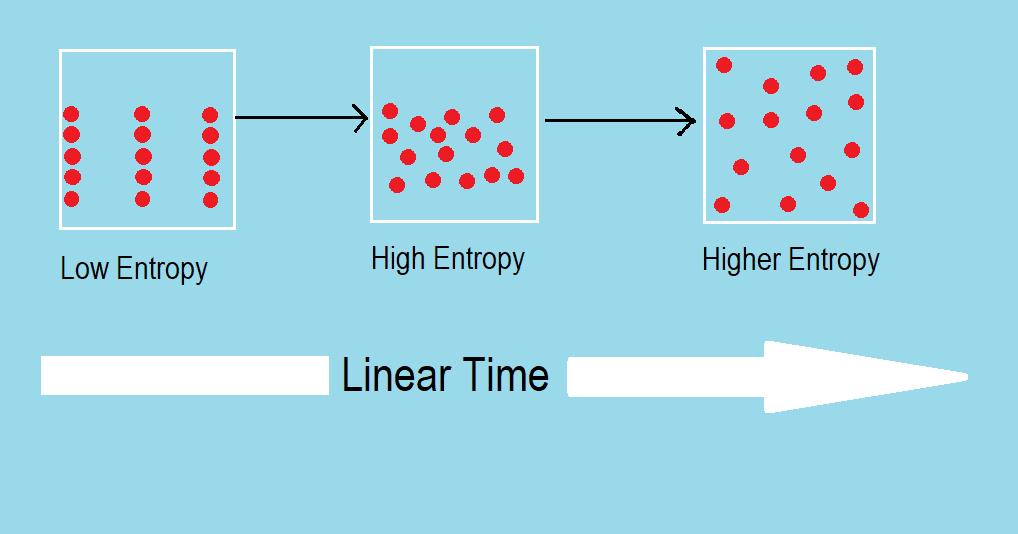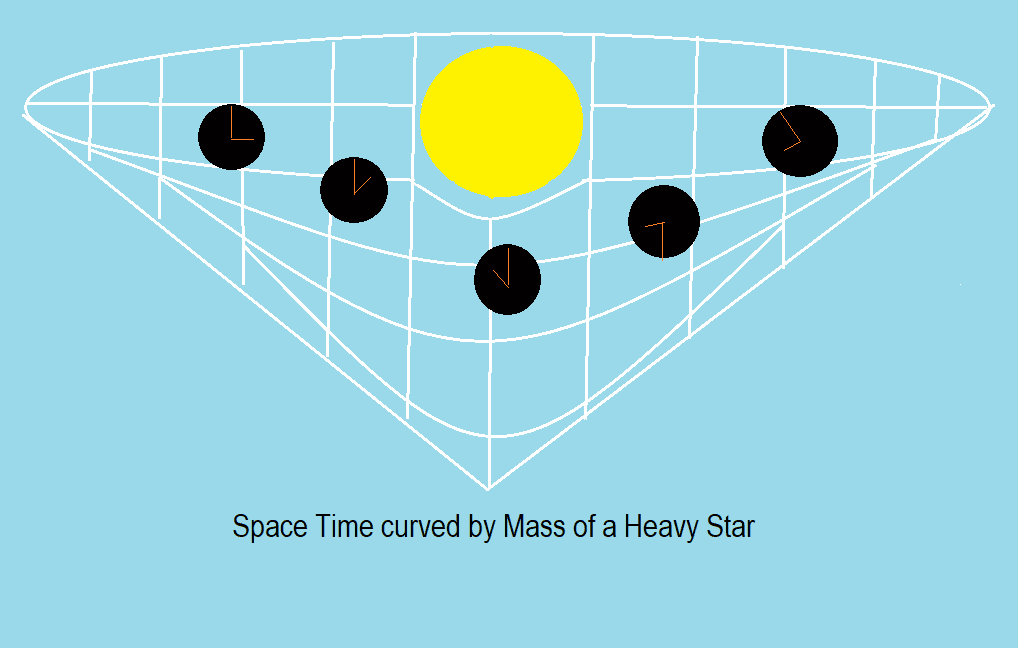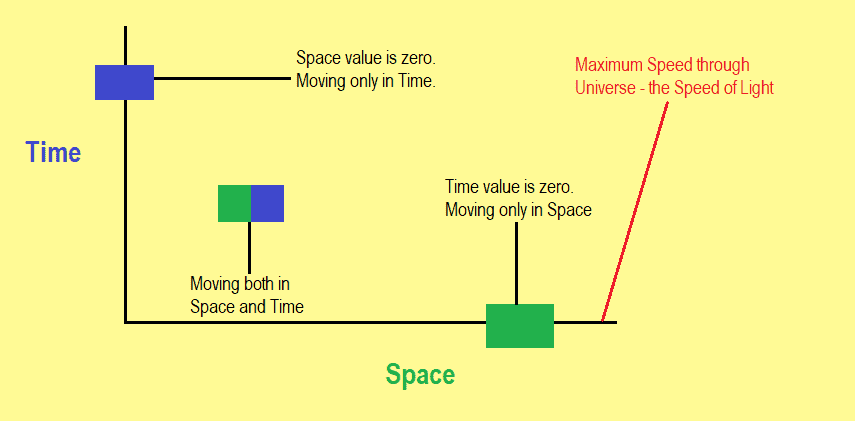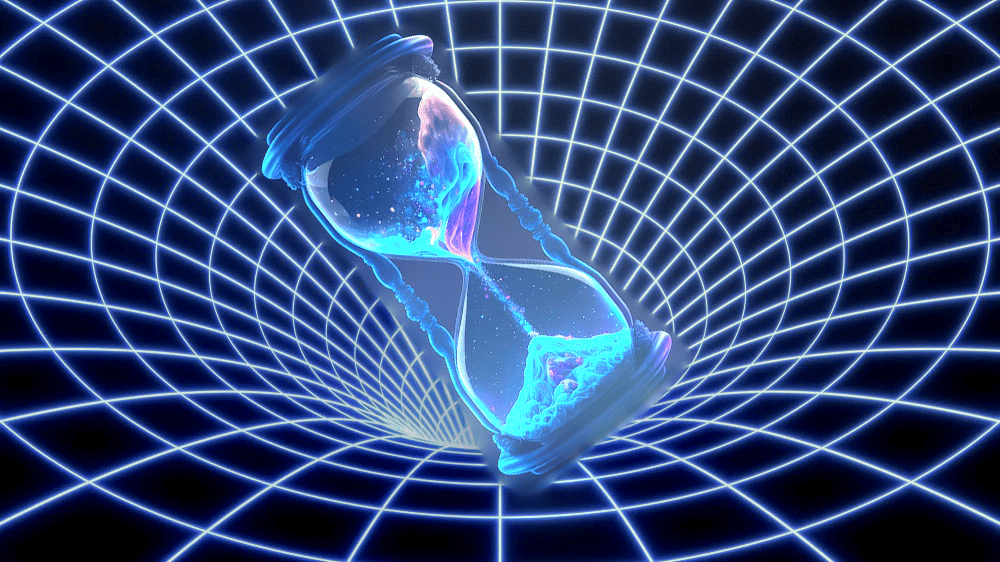Table of Contents
Properties of Time
Our Universe started with the Big Bang and with it, space and time are created. At first, we thought that time and space were separate entities. We also thought that time and space do not depend on the observers and they are absolute entities. Sir Issac Newton thought that space and time are ‘absolute’ and the properties of time and space are Universal. Sir Issac Newton saw space as a stoic platform where various incidents took place. He also thought that time itself does not depend on any other object or any occurrence and that properties of time are fixed and will not change due to the motion of celestial objects.
However, Einstein’s Special Theory of Relativity has shattered this classical Newtonian view of space and time. This theory has given us a glimpse into the weird nature and properties of time and it has completely shattered our perspective about our own Universe. Space and time have become an active player in the events of the cosmos and the properties of time seem to vary depending on the observers.
In fact, properties of time vary depending on whether we are on the surface of the Earth or orbiting the Earth on the International Space Station which is approximately 250 Miles above the Earth. A person in the International Space Station, which is orbiting above the Earth, feels time differently than a person who is on the surface of the Earth.
The Space itself has its own amazing properties and it would require a separate article to explore some of its incredible features. For this article, we will focus on ‘time’. The properties of time have eluded and mystified the scientific community. Time can appear mysterious and its properties may change depending on the observer. Through various experiments, we learn that time is not fixed for all and the properties of time depend on various other factors.
1. Properties of Time for Humanity: Sun, Earth, and Moon

For humanity, time is conceptualized on orbital movements of – Sun, Earth, and Moon. Our understanding and properties of time depend on these three celestial bodies. Our Earth rotates on its axis from West to East. This happening expresses itself as the Sun rising in the East and setting in the West. We call it a single ‘Day’.
Then, the Moon rotates around Earth in almost 28 days while showing only one side to Earth as the Moon’s rotation around its own axis and orbiting Earth takes almost the same time. This incident forms the basis of a ‘Month’. Then, Earth orbits the Sun in 365 days, 6 hours, and 9 minutes. We consider 365 days as one ‘Year’. To smooth out the extra 6 hours and 9 minutes, we add one extra day in February every 4 years. We call it ‘Leap Year’.
These celestial incidents with the Sun, Earth, and Moon are the backbone of our concept of time. Of course, various human cultures have adopted various methods to calculate calendars and they all differ from one another to some extent. However, for us, the basic structure and properties of time have more or less stayed the same.
With the progress of ‘time’, we have fashioned various types of ‘clocks’ which can capture the passing of linear time to perfection. Then we divided the ‘Day’ into precise measurements of ‘Hour’, ‘Minutes’, and ‘Seconds’. Then with the advancement of science and evolving understanding of the concept of time, scientists have developed better and precise ‘clocks’. Currently the ‘atomic clock’ is the most precise clock that human possesses.
2. Time is NOT Universal

Even though we humans have discovered precise clocks and we measure time with them, our understanding of time relies on the orbital movements of the Sun, Earth, and Moon. Our concept and properties of time are relative to our position in the cosmos. If we were to orbit some other star, smaller or bigger than the Sun, from a different distance, then the properties of time for us would have been different for us.
If we were to orbit some different star, we would be measuring the year on the orbital movements of that star. The ‘year’ may not be 365 days and may be more or less. We were in a binary system, the concept of ‘year’ could have been completely different and properties of time from our perspective would have been dictated by the complex orbital movements of the stars of the binary system.
Earth’s axial movement may render a ‘day’ less or more than 24 hours. We could have one or more moons or none at all. With that, our perspective of ‘month’ would have been completely different. Then, if we were to orbit a black hole, our perspective of time would be on a whole new different level and the properties of time would be completely different for us.
Of course, one thing to remember is that if we were situated in different places in the cosmos or we were to orbit different stars or a black hole, we feel and properties of time would be indifferent. The nature and properties of time would feel completely natural to us. Our biological clock will adjust with these ‘eternal’ celestial occurrences and would make us feel that our ‘time’ is ‘normal’.
It is when we compare our perspective of time with the perspective of time of another place in the Universe, we will see the difference. Just imagine, that in the far future, some of humanity traveled to another star system and settled out there. When they come back to Earth or if someone from Earth visits them, then we will see that the properties of time are completely different for those interstellar settlers.
3. Linear Time is Entropy

‘Entropy’ is one of the most interesting properties of time which refers to the gauge of order or disorder within a system. A Low entropy system is one with a high degree of order while a high degree of entropy system is one with a low degree of order. When a system is highly organized and there is no chaos, that system has low entropy. While, when a system is disorganized and highly chaotic, it has high entropy. Entropy is an integral part of the second law of thermodynamics which states that with increasing time, the entropy of a system will always increase.
If this interpretation is reversed, then it might be said that when a low entropy system moves towards a high entropy state, the incident expresses itself as a passing of time. Let’s explain this with some examples. When the Universe was created through the Big Bang almost 13.7 BN years ago, the Universe’s entropy was lowest and the Universe was extremely organized. All the four fundamental forces of the Universe were united into a single entity and the Universe was filled with pure energy.
However, as the Universe expanded, four fundamental forces were separated and space expanded through inflation. Due to that, the energy got diluted and transformed from short wavelength (higher energy state) to higher wavelength (low energy state). A huge portion of energy also transformed into ordinary matter which followed its own ‘dilution’ path and became disordered.
So, after coming into existence through the Big Bang, the Universe is heading toward a higher entropy state – meaning that the Universe is becoming more and more disorganized. This event (low entropy to high entropy) appears to us as a linear time where the low entropy state is considered as ‘past’, the current high entropy state is considered as ‘present’, and an even higher entropy state is termed as ‘future’. As per our current understanding, it is impossible to reverse the progression of entropy from higher state to lower state, unless of course, you are in ‘Tenet’ directed by Christopher Nolan. So it is not possible to reverse the linearity of time and go back to past events.
4. Time IS Space-time

The classical model or the Newtonian model thought that space and time are separate entities and that time is a single entity. However, now we know that time is not a single entity of the Universe. Time is created in the Big Bang and is rather an expression of our reality which is intertwined with the space itself which was also created in the Big Bang.
After the Big Bang, the young Universe started its journey as in its first second (known as ‘Planck Epoch’) it was expanding faster than light. We do not know exactly what were the nature and properties of time during the Plank epoch as nothing in that Universe would make sense to our intuition our current theories or our understanding.
The situation of that young Universe would have been extremely different and properties of time and space would have played out differently. All we know about ‘Planck Epoch’ is that the Universe went through extreme inflation which caused it to travel faster than the light. We don’t know much about time after Planck Epoch but we do have some theories and models to guess what might have happened. However, during this time there were no atoms and everything in the Universe was wheezing around the hot, dense, and small Universe at the speed of light. So there are no fixed references through which properties of time can be experienced or observed.
After the Universe expanded and cooled sufficiently to form matter, we started to see the nature of time. As the matter started to coalesce into a bigger structure, it started to bend the space itself and created various curvatures within the space. This bending of space can be seen through the bending of light around the curved space. The curvature of space has also affected the nature and properties of time. Around the curvature, created by the gravitational pull of a massive object, we see that properties of time work differently.
An extreme example of this can be seen around a black hole which slows down the time of objects nearer to the Black Hole from our perspective. Theoretically, if an object gets caught by the massive gravitational pull of a black hole and if it crosses the event horizon, it will fall into the black hole. The extreme gravity of the black hole has bent the space and taken it along with its steep curvature. As a result, not even light can escape the black hole. This extreme curvature changes the properties of time from our perspective as the time of the falling object from our perspective would seem to have stopped.
We will literally see that the object has frozen near the center of the Black hole. However, from the object’s point of view, nothing has changed as it continues to fall into the black hole. The light coming from the object would be stretched to the red spectrum and would continue to do so. We would have to wait for near eternity to see that object fall inside the black hole and probably by that time everything else in the Universe would be annihilated.
5. Time IS Zero for Massless Particles
We have learned that time is not a single entity but rather is intertwined with space itself. Although space is expanding faster than the speed of light (approximately 300,000 km/s or 186,000 miles/s), nothing in this Universe can move faster than the light through space. This has profound implications for the properties of time for the massless particles such as photons. For a massless particle like a photon, the properties of time are completely different as massless particles like photons do not feel the time at all. Of course, it would take some time for the light to travel a certain distance, but the photon particle will not feel the passing of time.
For example, the light from the Solar System’s nearest Star system, Alpha Centauri, takes approximately four years to reach Earth. However, that is from our perspective. From the photon’s perspective, the photon does not feel any time and the travel is instantaneous. Since the photon is a massless particle and it travels at the light speed which is the highest speed that space allows, it does not have any frame of reference and hence does not feel the passing of time. For the photon, the time has frozen.

For better understanding let’s look at the above graph. In the above graph, we have charted space (x-axis) and time (y-axis) in a two-dimensional plane. Any point in that two-dimensional chart will represent the position of a particle with respect to both space and time. There is no negative value as space or time would not have such. Now, we must remember that the chart is part of certain reference points through which the properties of time express themselves.
The value of time is marked with blue color while the value of space is marked with green color. The rectangle with both blue and green colors represents the movement of particles in both space and time. The blue rectangle in the Y axis represents when the particle is stationary in space with respect to the reference points as nothing in the Universe is stationary. Every motion or motionlessness is relative and everything in the Universe is ‘moving’ or ‘not moving’ with respect to some reference points. The stationary particle is moving with respect to time.
The X-axis of the chart is interesting as if we make the value of Y zero, the particle will move through the X-axis. In this chart, the X-axis represents the speed of light which is the highest speed attainable through the Universe. In this X-axis, the time is zero. So, any particle moving at X axis or at the speed of light, will not feel any time. As a particle moves through the Universe at the speed of light, all the reference points will converge into a single point as the motion of that particle will be instantaneous.
Read More Articles Related to Science and Space
- Top 5 Important Citrus Fruits That You Should Know About
- 10 Factors for Emergence of Intelligent Life in The Universe
- Top 4 Important Vegetable Groups That You Should Be Aware Of
- Discoveries by JWST: 10 Incredible Findings of The Telescope
- Space Science: 6 Vital Reasons Why We Should Invest in It
- Solar System: 10 Astonishing Uniqueness of our star system
- Our Universe: An Incredible Journey of 13.7 Billion Years
- Indian Gooseberry (Amla): 10 Amazing Facts About This Wonder Fruit
- Top 6 Solar System Objects That Might Destroy Life On Earth
- The Great Physicist Peter Higgs Passes Away at 94
- Certain End of The Universe: 4 Forces of Nature to Watch Out For
- Big Bang: An Incredible Start of Universe 14 Billion Years Ago




